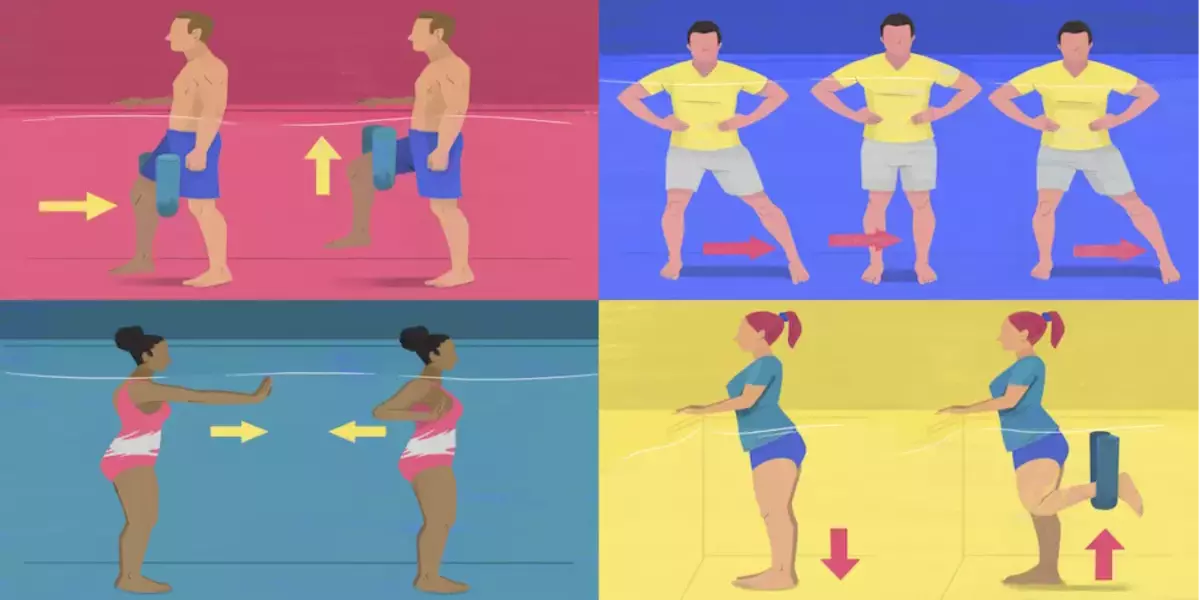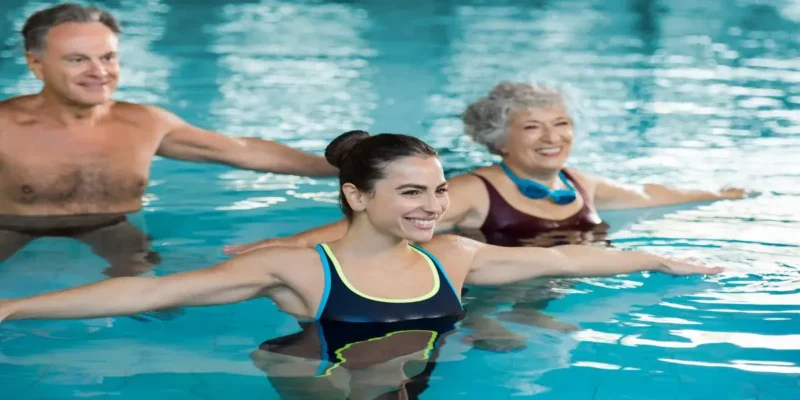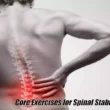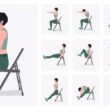[ez-toc]
Introduction
Joint and muscle pain can significantly impact your quality of life and limit your ability to perform daily activities.
Aqua therapy, also known as water therapy or aquatic exercise, provides a low-impact and effective way to manage and alleviate joint and muscle pain.
In this article, we will explore the top water exercises designed to relieve joint and muscle pain.
The buoyancy and resistance of water provide a supportive environment that reduces stress on the joints while allowing for gentle strengthening and improved flexibility.
Understanding Joint and Muscle Pain
Joint and muscle pain can occur due to various factors, including injury, overuse, arthritis, or chronic conditions.
The pain can range from mild discomfort to severe, affecting mobility and overall well-being.
Aqua therapy can be particularly beneficial for joint and muscle pain because the water’s buoyancy reduces the impact on the joints, decreases inflammation, and supports pain-free movement.
Benefits of Aqua Therapy
Aqua therapy offers several benefits for individuals experiencing joint and muscle pain:
- Low-impact exercise: Water provides buoyancy, reducing stress on the joints and minimizing the risk of further injury.
- Increased range of motion: The resistance and gentle pressure of water can improve flexibility and joint mobility.
- Muscle strengthening: Water offers resistance in all directions, helping to build strength in the muscles without placing excessive strain on the joints.
- Reduced pain and inflammation: Immersion in water can help decrease pain and inflammation, providing relief for sore joints and muscles.
- Enhanced balance and stability: Water’s supportive environment allows individuals to improve balance and stability, which is crucial for joint health.
Pre-Aqua Therapy Considerations
Before starting aqua therapy exercises, consider the following:
- Consult with a healthcare professional, such as a physical therapist, to determine if aqua therapy is suitable for your specific condition and pain level.
- Choose a pool or aquatic facility that offers warm water temperatures (around 86-92°F or 30-33°C) to help relax muscles and promote circulation.
- Wear appropriate swimwear and water shoes for comfort and safety.
- Start with a brief warm-up, such as walking or stretching outside the water, to prepare your body for aquatic exercise.
- Listen to your body and perform exercises within your pain-free range of motion. Modify or avoid any exercises that cause discomfort or pain.
Top Water Exercises for Joint and Muscle Pain

Water Walking
Walk back and forth in waist- to chest-deep water, focusing on maintaining proper posture and engaging your core.
Swing your arms naturally and take long, deliberate steps. Perform this exercise for 10-15 minutes to warm up and engage the whole body.
Also Read: The Health Benefits of Qigong: The Ancient Chinese Practice
Leg Swings
Stand facing the pool wall and hold onto the edge for support. Swing one leg forward and backward, keeping it straight and relaxed.
Perform 10-15 swings on each leg, gradually increasing the range of motion and speed.
Hip Circles
Stand in shoulder-deep water and place your hands on your hips. Circle your hips in one direction, then switch to the opposite direction. Perform 10-15 circles in each direction, focusing on fluid movements and engaging the core.
Arm Circles
Stand in shoulder-deep water with your feet hip-width apart. Extend your arms straight out to the sides and make small circles with your hands and arms.
Gradually increase the circle size and reverse the direction. Perform 10-15 circles in each direction.
Knee Lifts
Stand in waist-to-chest-deep water and lift one knee toward your chest while balancing on the other leg. Alternate between legs and perform 10-15 knee lifts on each side. Use your core muscles to stabilize and maintain balance.
Heel-to-Butt Kicks
Stand in waist-to-chest-deep water and kick your heels toward your buttocks, one leg at a time. Alternate between legs and perform 10-15 kicks on each side. Keep your upper body upright and engage your core for stability.
Water Squats
Stand with your feet shoulder-width apart in waist-deep water. Lower your body into a squat position, as if sitting back into an imaginary chair, while keeping your knees aligned with your toes. Return to a standing position and repeat for 10-15 repetitions.
Water Jogging
Stand in the waist- to chest-deep water and jog in place, lifting your knees as high as comfortable. Use your arms to assist with the jogging motion. Continue for 5-10 minutes, focusing on maintaining a steady pace.
Wall Pushes
Stand facing the pool wall with your palms resting on the wall at shoulder height. Lean forward and push against the wall, extending your arms.
Hold for a few seconds, then release. Repeat 10-15 times, focusing on engaging the chest and arm muscles.
Floating Relaxation
Find a deeper area of the pool where you can float comfortably. Relax your body and let the water support you.
Close your eyes, focus on your breathing, and enjoy the sensation of weightlessness. Stay in this position for a few minutes to promote relaxation and relieve joint and muscle tension.
Tips for Effective Aqua Therapy
To make the most out of your aqua therapy exercises, consider the following tips:
- Start with a gentle warm-up and gradually increase the intensity and duration of your exercises as your body becomes more comfortable.
- Focus on proper form and alignment during each exercise to maximize the benefits and prevent strain or injury.
- Pay attention to your breathing and try to synchronize it with your movements for increased relaxation and effectiveness.
- Incorporate a variety of exercises to target different muscle groups and promote overall body strength and flexibility.
- Don’t be afraid to seek guidance from a qualified aqua therapy professional or physical therapist to ensure proper technique and safety.
FAQs
- Is Aqua Therapy suitable for everyone with joint and muscle pain? Aqua therapy can be beneficial for many individuals with joint and muscle pain. However, it’s important to consult with a healthcare professional to determine if it is suitable for your specific condition.
- How often should I engage in Aqua Therapy? The frequency of aqua therapy sessions may vary depending on your condition and recommendations from your healthcare professional. Start with 2-3 sessions per week and adjust as needed.
- Can I perform Aqua Therapy if I don’t know how to swim? Yes, you can engage in aqua therapy even if you don’t know how to swim. Most water exercises for joint and muscle pain can be performed in shallow water, and you can always stay in areas where your feet can touch the ground for added safety.
- Are there any precautions I should take before starting Aqua Therapy? It’s important to consult with a healthcare professional before starting aqua therapy, especially if you have any underlying medical conditions. Additionally, warm up properly, wear appropriate swimwear and water shoes, and listen to your body during exercise.
- Are there any other water-based activities that can help with joint and muscle pain? Yes, water-based activities such as swimming, water aerobics, and water yoga can also be beneficial for joint and muscle pain. These activities provide additional opportunities for gentle exercise, relaxation, and pain relief.
Conclusion
Aqua therapy offers a refreshing and effective way to relieve joint and muscle pain.
By incorporating the suggested water exercises into your routine and taking advantage of the water’s supportive and low-impact environment, you can improve flexibility, strengthen muscles, and experience relief from pain.
Remember to consult with a healthcare professional if needed and listen to your body’s signals during aqua therapy. Embrace the benefits of water exercise and enjoy the healing properties it offers.







Want to be with